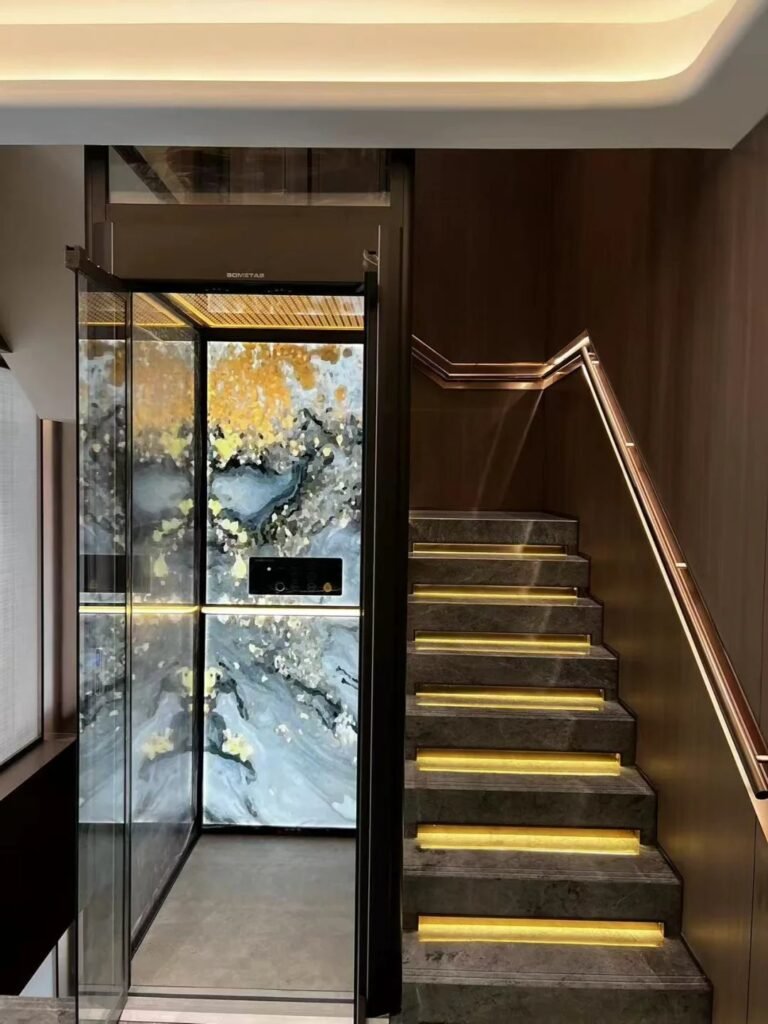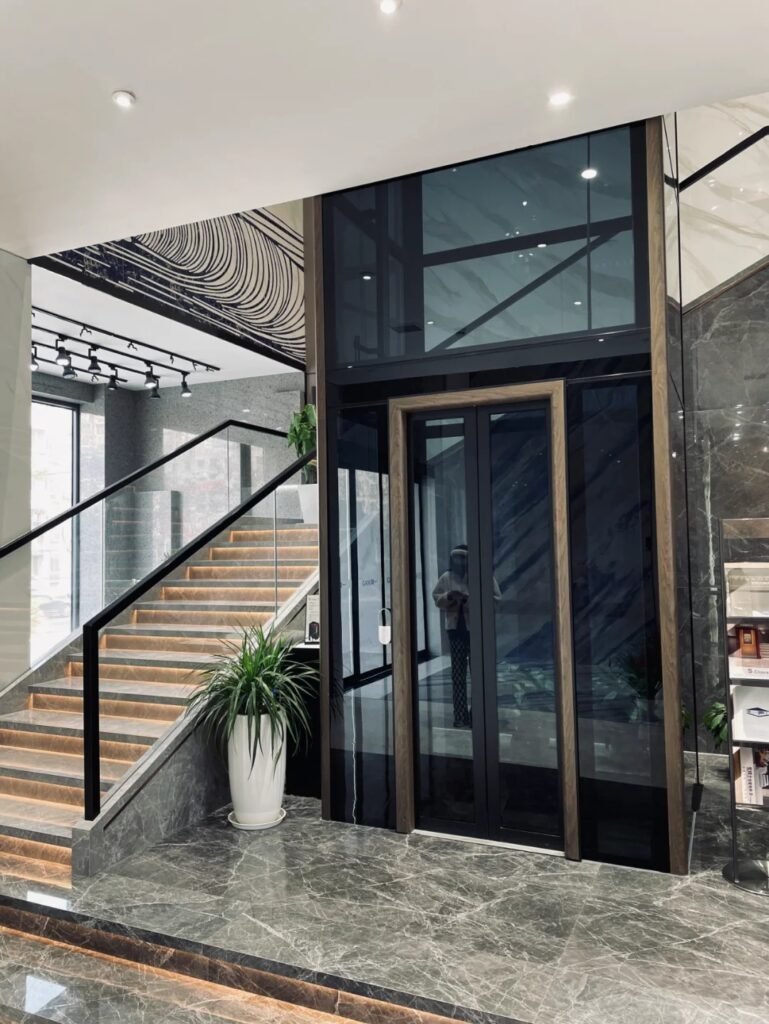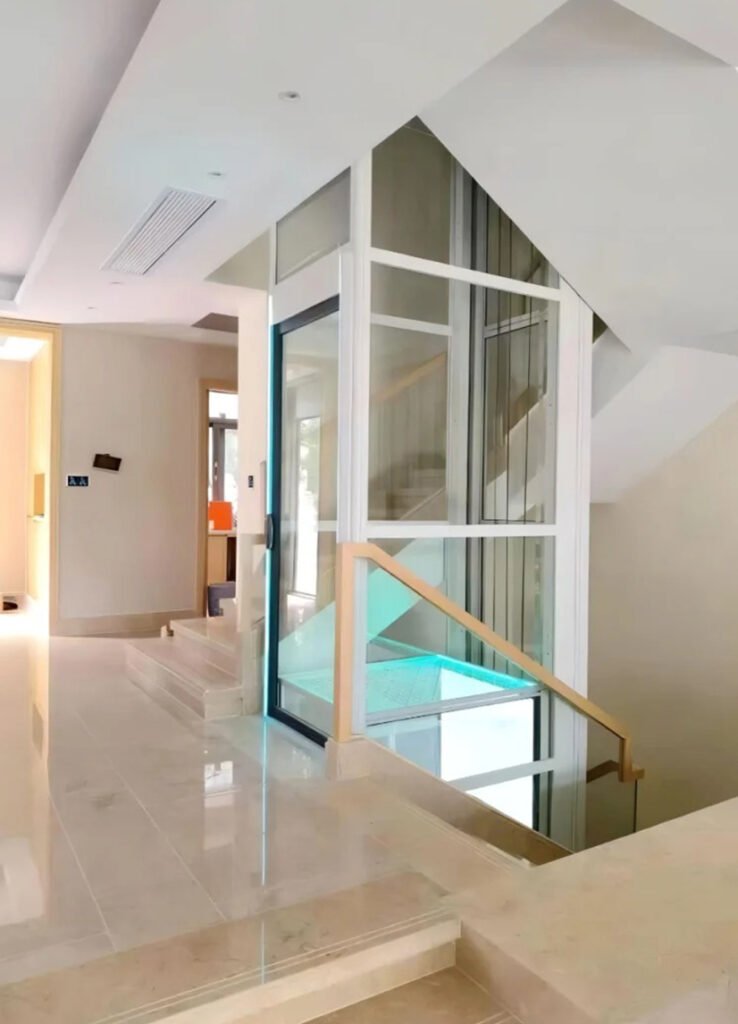Home lifts and elevators, as dual pillars of residential vertical mobility, are driving a global revolution in accessible and inclusive living. Amid aging populations, urbanization, and green building trends, these technologies complement each other across scenarios, jointly shaping the future of barrier-free living.
Technological Comparison and Synergy
Home elevators and lifts exhibit differentiated competition:
Drive Systems:
Elevators: PM gearless traction (e.g., KONE EcoDisc) dominates with 1m/s speeds and 40% energy savings over hydraulics;
Lifts: Hydraulic (Stiltz Duo) and pneumatic vacuum tech suit low-rise retrofits, cutting space needs by 50%.
Spatial Requirements:
Elevators: MRL designs need ≥1.5㎡ shafts and ≥250mm pits;
Lifts: Shaftless pneumatics require 0.8㎡, ideal for micro-homes and heritage sites.
Smart Controls:
Elevators: OTIS Compass® uses AI to cut wait times by 30%;
Lifts: CIBES screw drives (Sweden) enable voice/gesture commands in multiple languages.

Global Market Dynamics
The 2023 global home lifts and elevators market reached $9.2B, with regional traits:
North America (35%): 18% annual growth in hydraulic lifts driven by aging populations (21% over 65 by 2030);
Europe (28%): EN 81-41 standards boost retrofits, e.g., French châteaux using disguised shafts;
Asia-Pacific (30%): China’s retrofit policies drove 25% elevator orders; Japan’s foldable lifts (≤300kg) cost ¥5M;
Middle East (7%): Saudi NEOM’s maglev elevators hit 4m/s with AR guides.
Green Transition and Innovations
Carbon neutrality spurs advancements:
Material Revolution: Thyssenkrupp’s bamboo-fiber elevator cabins cut carbon footprints by 60%; recycled aluminum lift rails reduce weight by 40%.
Energy Regeneration: Hitachi BL7000 generates 4,800kWh/year; pneumatic lifts harness air pressure for 15% efficiency.
IoT Integration:Bosch’s platform syncs elevators/lifts with smart homes, auto-docking during emergencies.

Challenges and Future Trends
Key hurdles include:
Cost Barriers: U.S. elevators average 45k;liftscost28k, while India’s localized models drop to ₹1.8 lakh (~$2200);
Regulatory Fragmentation: ASME A17.1 vs. EN 81-20 require 12%-15% R&D adaptation costs;
Consumer Misconceptions: 47% mistakenly view lifts as “temporary,” despite 20-year lifespans.
Future innovations focus on:
Maglev Elevators: Thyssen tests 10m/s vacuum tubes with 50% energy cuts;
Modular Lifts: Italy’s ElevArch offers plug-and-play cabin modules;
Health Monitoring: Fujitec’s medical elevators track heart rate and SpO2 via radar.

As technology democratizes design, home lifts and elevators evolve from utilities into icons of sophisticated living, chronicling humanity’s quest for residential freedom.





